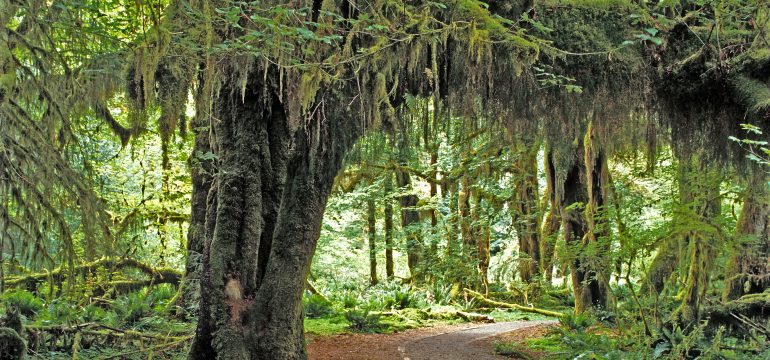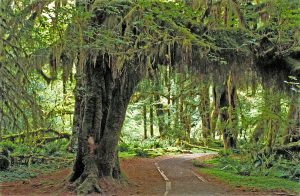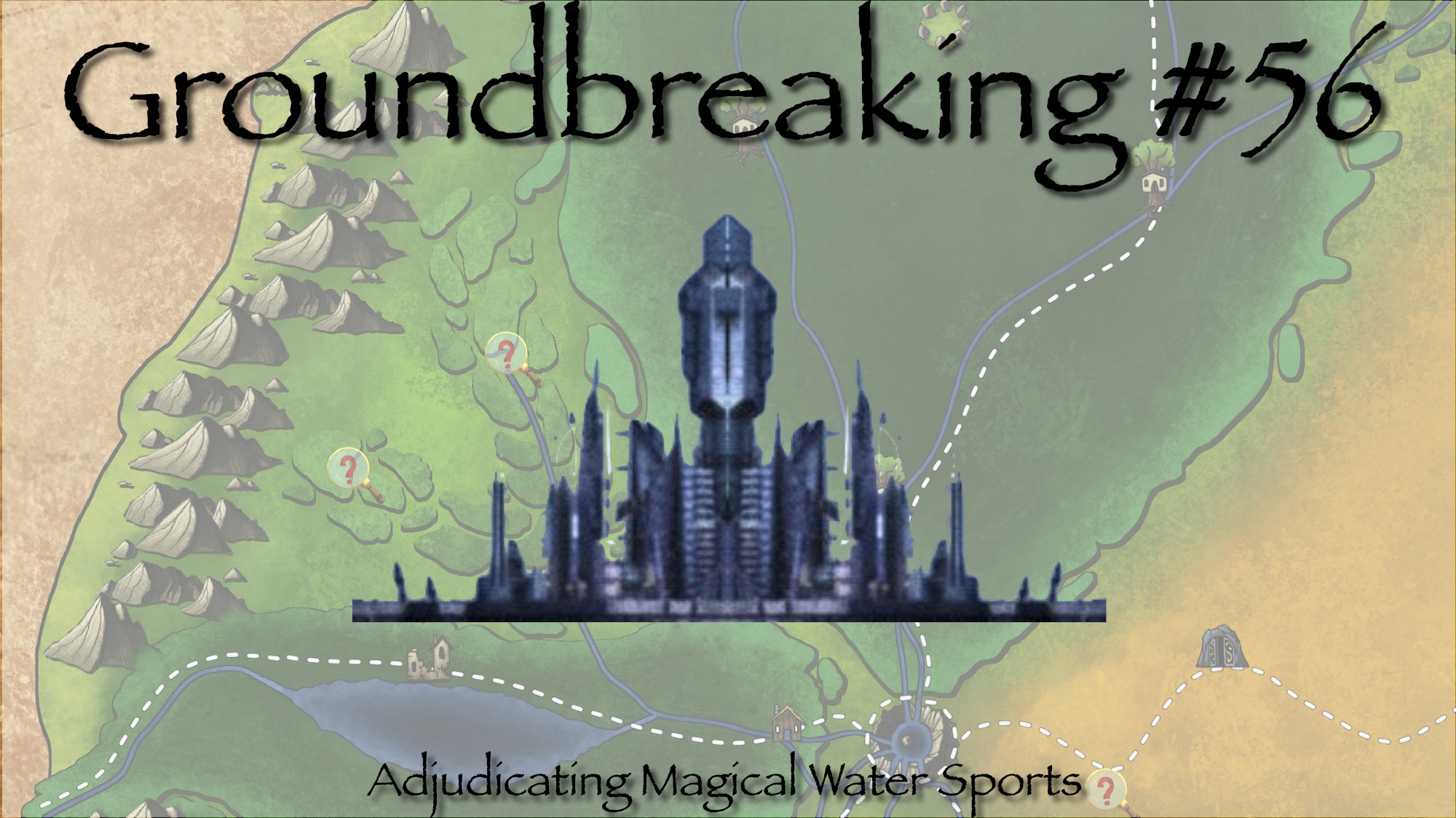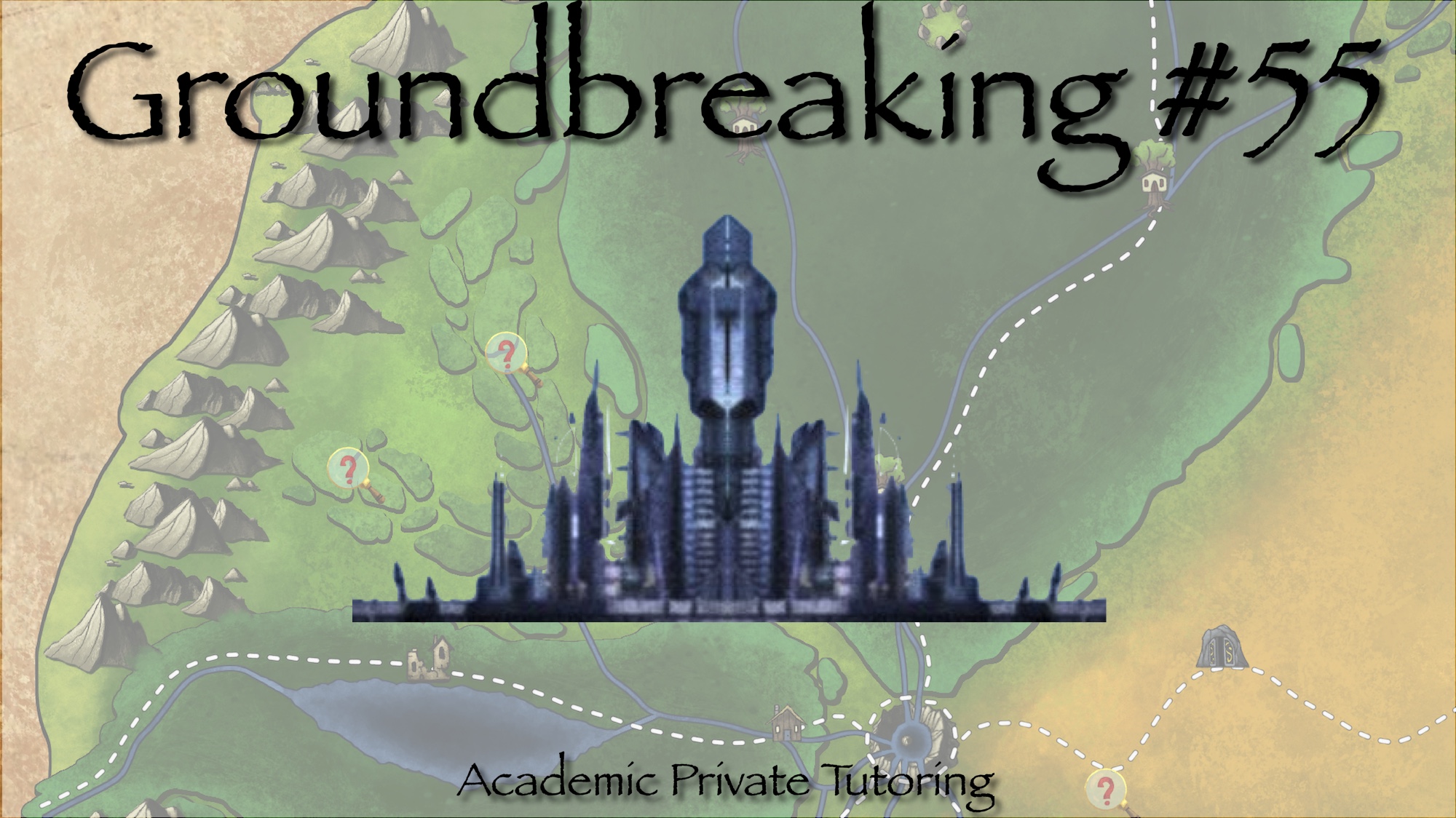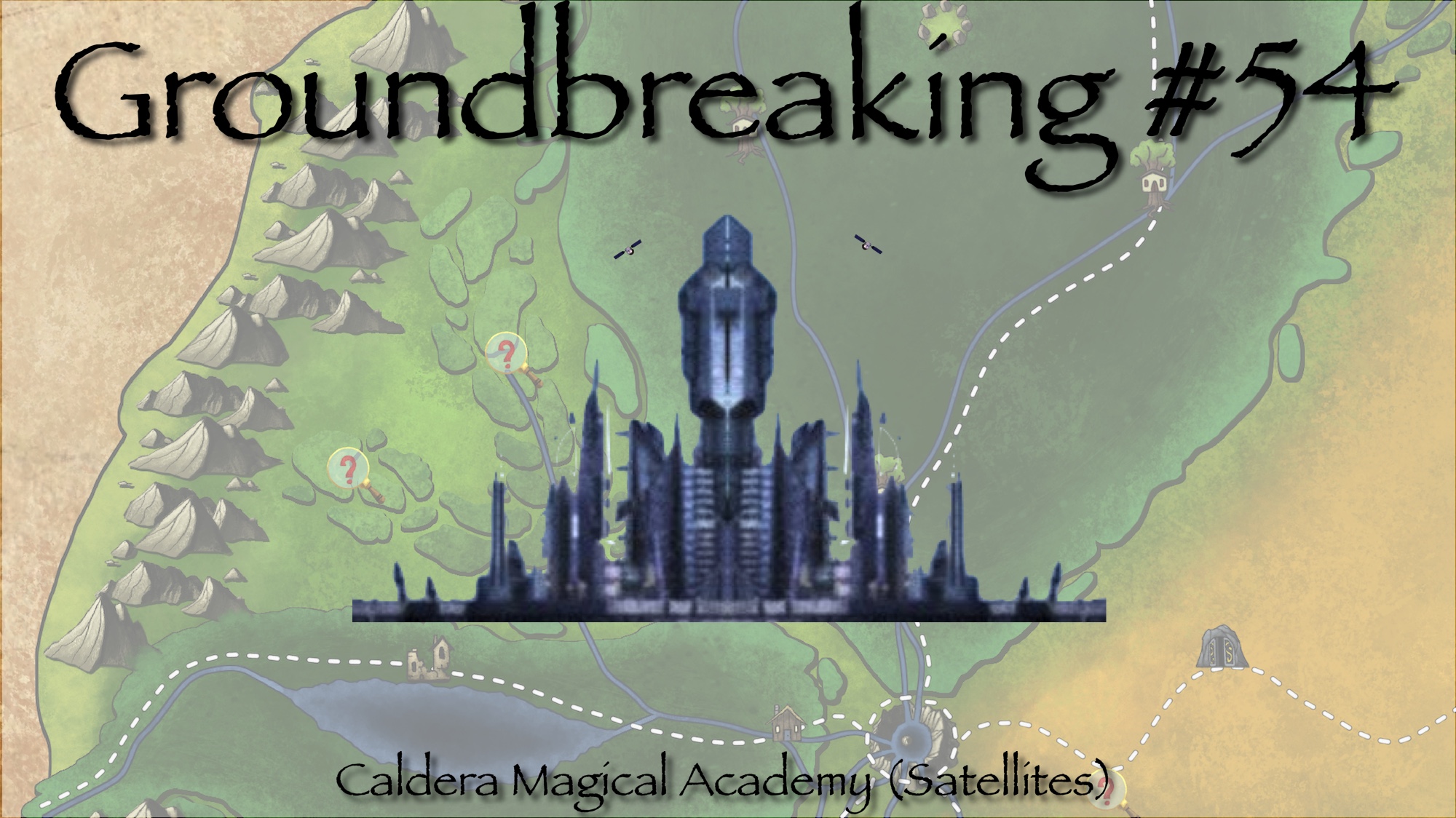Welcome back! We have a pretty good handle on our central mountain, and the lake and village inside. Instead of breaking ground today, how about we cover an area that broke up long ago. What happens when you take a ravine, run water through it, add forest, raise and regulate the temperature, and then keep the whole region wet on a regular basis? Hidden Rainforest!
When the volcano erupted, the land to the west cracked open, leaving a crevasse hundreds of feet wide that started near the mountain and ultimately made its way to the edge of the basin. The floor was covered in a light layer of magma, and over time the water running down the mountain found its way in, widening the crevasse into a deep ravine while feeding the plants that seeded the floor. Fast forward thousands of years, and the ravine has widened into a small, lush valley (averaging 400 ft. deep and a mile wide). In time, this valley would continue to grow deeper until the river is at the same ground level as the lands outside of the basin, much as the real world grand canyon has.
The river averages 100 ft. wide and is generally shallow (on average only 5 ft. – 10 ft. deep) with a deeper channel in the center that can reach 50 ft. wide and 50 ft. deep. Due to the relative flatness of the valley, the water is moves slow enough to allow a lot of plant-life to grow on the banks. This makes the true width difficult to measure. When exceptionally rainy weather persists, the shallow depths mean that the waters frequently extend well beyond the banks of the river. In the middle of the valley, the land surrounding the river is in a depression, causing the waters to pool into a marsh naturally, becoming swamp-like when the river is running high. It is at this location that ancient ruins can be found, sometimes covered by flood waters while at other times completely dry. From what I understand, flooding generally causes rivers to run faster in the deeper channels, whirlpools in shallows, and overflow often damages the surroundings due to the speed at which it bursts out. I wanted this river to be shallow enough, slow enough, and the land flat enough that overflow was very common and instead of damaging that it is just a part of the forest’s life cycle.
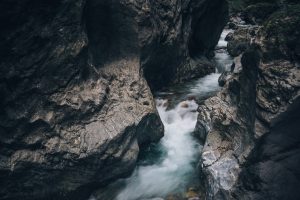 The end of the valley exits the basin at an altitude of roughly 3,000 ft. This passage is a narrow crevasse of bare rock, with the river running wall to wall at the floor. Due to narrowing and rapid descent, the river forms white water rapids, creating protection for the valley in that it effectively prevents entry. The speed and danger from the rapids make water transit deadly, the spray makes climbing the walls impossible, and the roar masks any sounds on either end of the rapids. Only when winds line up perfectly with the opening can it penetrate into the valley, and when doing so, the effect is heard more than felt; winds whistle through this narrow crevasse at high speeds, as if a tornado were coming, sometimes shaking the walls enough to vibrate the area for miles around. Due to the pooling of water and the way that the rapids have carved the ground under the surface, there are a lot of places for aquatic creatures to hide and hunt, making this area even more dangerous than the rapids alone. This makes the mouth of the river, at the mountain’s base, the primary entry point for most creatures that can’t fly, swim, or climb. This is somewhat crucial for maintaining that this area has become somewhat of a valley lost in time (which we will discuss more in the future).
The end of the valley exits the basin at an altitude of roughly 3,000 ft. This passage is a narrow crevasse of bare rock, with the river running wall to wall at the floor. Due to narrowing and rapid descent, the river forms white water rapids, creating protection for the valley in that it effectively prevents entry. The speed and danger from the rapids make water transit deadly, the spray makes climbing the walls impossible, and the roar masks any sounds on either end of the rapids. Only when winds line up perfectly with the opening can it penetrate into the valley, and when doing so, the effect is heard more than felt; winds whistle through this narrow crevasse at high speeds, as if a tornado were coming, sometimes shaking the walls enough to vibrate the area for miles around. Due to the pooling of water and the way that the rapids have carved the ground under the surface, there are a lot of places for aquatic creatures to hide and hunt, making this area even more dangerous than the rapids alone. This makes the mouth of the river, at the mountain’s base, the primary entry point for most creatures that can’t fly, swim, or climb. This is somewhat crucial for maintaining that this area has become somewhat of a valley lost in time (which we will discuss more in the future).
While flight within 100 ft. of the top edges of the valley is dangerous due to wind effects that emulate whirlpools in river rapids, this layer of air also helps protect the valley from outside weather. Wind crossing over the top also creates a variety of sound effects in the upper reaches of the trees and cliff edges. This can vary from roars to whistles, hums to rumbles. Additionally, the valley walls are bare near the tops, which can often cause echos and reverb effects. As these sounds make their way down through the moisture and trees, they become muffled and muted, to the point of being just a part of the forest as the babbling of the slow moving waters. These sounds, combined with the near constant fogs are at the heart of all the tales that the region is haunted. I wanted to provide another way in which this area was hard to reach, but also protected from the outside. There will still be predators that can climb in and out, or perhaps tunnel, but we have now established that this valley is almost completely cut-off from the rest of the basin.
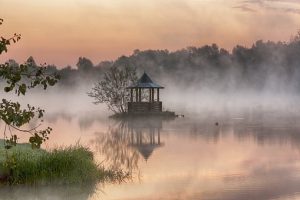 Due to the way in which I decided the prevailing winds cross the basin from west to east and rise up the mountain, much of the air and extreme weather will tend to stay above the valley. This causes a bit of a lid over the valley that tends to keep the moisture and temperature normalized for much of the year, and has allowed the flora to grow well beyond that found in any other parts of the basin. The forest is so thick, that even wind that does reach down into the valley rarely sustains more than a breeze. This allows moisture to persist as an almost constant fog that often moves through the trees in roughly the same direction as the river. I don’t know all the ins and outs of inversion layers and fluid dynamics that would be required to claim that this would really work as I want it to, so we are going to pretend that my limited knowledge from my interests in such things allows me to at least word it in a way that makes it believable.
Due to the way in which I decided the prevailing winds cross the basin from west to east and rise up the mountain, much of the air and extreme weather will tend to stay above the valley. This causes a bit of a lid over the valley that tends to keep the moisture and temperature normalized for much of the year, and has allowed the flora to grow well beyond that found in any other parts of the basin. The forest is so thick, that even wind that does reach down into the valley rarely sustains more than a breeze. This allows moisture to persist as an almost constant fog that often moves through the trees in roughly the same direction as the river. I don’t know all the ins and outs of inversion layers and fluid dynamics that would be required to claim that this would really work as I want it to, so we are going to pretend that my limited knowledge from my interests in such things allows me to at least word it in a way that makes it believable.
The Rumor Mill
Each of the following rumors can be learned by spending an hour or more gathering information from locals. The DC listed is the target DC to determine if the rumor is true (T), false (F), or nobody knows (?).
The Rainforest
DC 10 – (F) Druidic magic protects the region from outside weather.
DC 15 – (?) Stairs from the ruins seem to appear all over, but never in the same place twice.
DC 20 – (F) The colorful insects and birds are fey creatures, not simply unique to the valley.
DC 25 – (T) Dinosaurs can be found in certain areas of the rainforest.
DC 30 – (T) The fog seems to follow people that enter the forest nefariously.
The River
DC 10 – (T) People have fallen into the river while crossing and were never seen again.
DC 15 – (F) Portals in the river let in the demon lights that haunt the valley at night.
DC 20 – (T) Aquatic predators the size of men live near the rapids that exit the valley.
DC 25 – (?) A black dragon lives in the marsh near the ruins.
DC 30 – (F) The elders sacrificed in the caldera lake are found on the river’s shores.
Please everybody, keep the name ideas coming in to our Discord server https://discord.gg/Rt79BAj. After we get a handle on all of the locations, I will be picking names from those submitted to help flesh out the history of the region!

